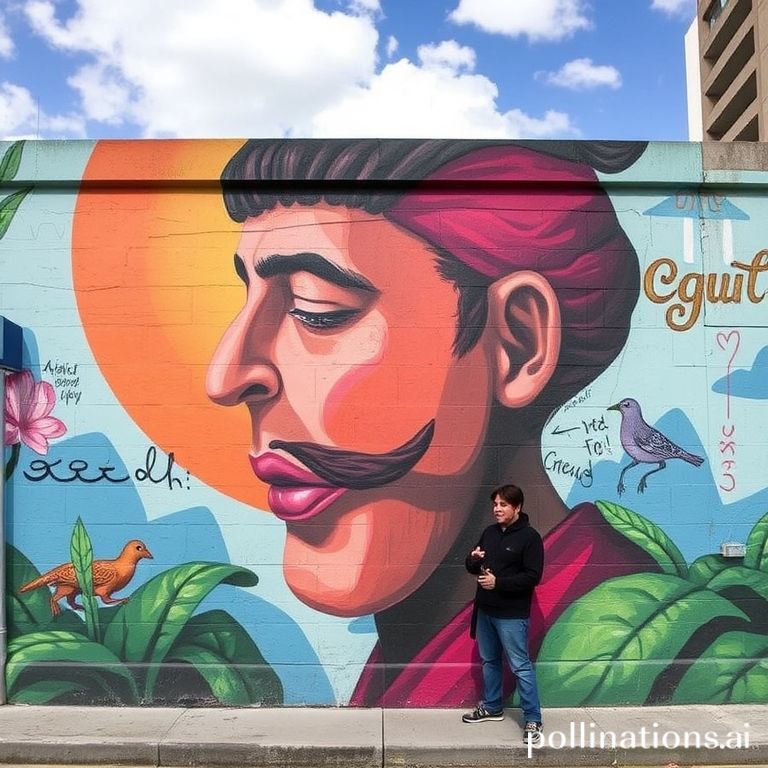Mexico City, a vibrant metropolis, pulsates with life, art, and history. Beyond the ancient ruins and bustling markets lies a captivating art scene that spills onto the streets in the form of breathtaking murals. These aren’t just random acts of vandalism; they are powerful expressions of culture, politics, and the soul of the city. We had the chance to speak with a local street artist who gave us unique insights into the world of Mexico City murals.
In this article, we delve into the heart of Mexico City’s mural scene through the eyes of a street artist. We’ll explore the history, significance, and evolution of this unique art form, and what it means to the community. Get ready for a colorful journey!
The Historical Roots of Mexican Muralism
The mural tradition in Mexico has deep roots, stretching back to pre-Columbian times when indigenous civilizations adorned temples and public spaces with vibrant frescoes. However, the modern mural movement gained momentum in the early 20th century, following the Mexican Revolution. The government commissioned artists to create large-scale murals on public buildings, aiming to educate and inspire the largely illiterate population with narratives of Mexican history, identity, and social justice.
Key Figures of the Mural Renaissance
- Diego Rivera: Perhaps the most famous Mexican muralist, Rivera’s works are known for their bold figures, dynamic compositions, and socialist themes. His murals can be seen in the National Palace and the Secretariat of Public Education in Mexico City.
- José Clemente Orozco: Orozco’s murals are characterized by their dramatic and often tragic portrayal of human suffering and social struggles. His masterpiece, “Hidalgo,” is located in the Government Palace of Guadalajara.
- David Alfaro Siqueiros: Siqueiros was a revolutionary and a political activist as well as an artist. His murals are known for their experimental techniques and their focus on technological progress and social change.
Mexico City’s Contemporary Street Art Scene
While the historical mural movement was largely government-sponsored, today’s street art scene in Mexico City is more organic and diverse. Artists come from various backgrounds, with different styles and motivations. Some create art for political commentary, others for aesthetic expression, and still others for community engagement. The streets of neighborhoods like Roma, Condesa, and Coyoacán serve as canvases for these artistic voices.
A Street Artist’s Perspective
We spoke with “Ikal,” a Mexico City-based street artist who has been creating murals for over a decade. Ikal shared their thoughts on the current state of the mural scene:
“The mural scene in Mexico City is thriving. There’s so much talent and creativity here. What’s beautiful is the diversity of styles and messages. You’ll find everything from traditional Mexican imagery to abstract art, from political statements to celebrations of everyday life,” Ikal explained.
The Role of Street Art in the Community
Ikal emphasized the importance of street art as a form of communication and community building. “Murals can transform neglected spaces into vibrant areas that people can enjoy. They can also spark conversations, challenge perspectives, and promote a sense of belonging. When people see their history, culture, or struggles reflected in a mural, it can be incredibly empowering,” Ikal said.
Challenges and Opportunities
Despite the vibrant scene, street artists in Mexico City face challenges. Legal restrictions, lack of funding, and competition for wall space can be obstacles. However, there are also opportunities for artists to connect with communities, collaborate with businesses, and gain recognition for their work.
Tips for Exploring Mexico City’s Murals
- Take a guided tour: Several organizations offer street art tours that provide insights into the history, techniques, and artists behind the murals.
- Explore on your own: Wander through neighborhoods like Roma, Condesa, and Coyoacán, keeping an eye out for hidden gems.
- Follow local artists on social media: Many artists share their work and upcoming projects on Instagram and other platforms.
- Be respectful: Remember that street art is often created in public spaces. Avoid touching or defacing the murals, and be mindful of the surrounding community.
Conclusion
Mexico City’s murals are more than just colorful decorations; they are reflections of the city’s soul. They tell stories of history, struggle, and hope. Through the eyes of a street artist, we’ve gained a deeper appreciation for the power and significance of this art form. So, next time you find yourself in Mexico City, be sure to look beyond the surface and immerse yourself in the vibrant world of its murals.
Ready to experience more of Mexico’s artistic side? Check out our other articles on Mexican culture and travel!
IMAGE: A vibrant and detailed mural in Mexico City depicting scenes of Mexican history and culture. The mural is painted on a large building wall in the Roma Norte neighborhood, with intricate details and bold colors such as reds, yellows, blues, and greens. A street artist is standing in front of the mural, holding spray paint cans and smiling proudly at their creation. The scene is bathed in warm sunlight, creating a lively and energetic atmosphere. The style is realistic with a touch of artistic flair, capturing the essence of Mexican muralism.


